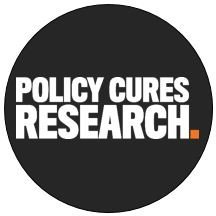
NAIROBI, Kenya, May 31, 2024 -/African Media Agency (AMA)/- On Tuesday, Policy Cures Research will be releasing a first-of-its-kind report (attached and note embargo) on the sidelines of the World Health Assembly that assesses the health and economic impact of the past 20 years of investment in neglected disease R&D. This comes just after our partners at Duke released a series of reports that explore the R&D ecosystem shifts needed to help accelerate the discovery and development of new tools for poverty-related neglected diseases, emerging infectious diseases, and maternal health over the next two decades. Together, the reports make a strong health and economic case for investing global health R&D.
I’m also sharing a few resources you can use to amplify the messages on your own social channels; PCR’s report is particularly interesting from a visual storytelling perspective.
Join our WhatsApp Channel- Interactive “scrollytelling” version of the PCR report
- Social media toolkit for foundation staff (attached)
- Policy Cures Research’s Communications Toolkit: This includes additional social content and some shareable data visualizations, animations, and stat cards (scroll down on the site to see them).
The Impact of Global Health R&D – Policy Cures Research
Purpose: To both assess the health and economic impact of the past 20 years of investment in neglected diseases R&D and establish a framework that the global health community can leverage to track and evaluate the impact of investment in global health R&D moving forward.
Key Findings:
- Adjusted for inflation, global investments in neglected disease research from 1994- 2022 were approximately $97.9 billion.
- The innovations made possible by investments in neglected disease research between 20000 and today have saved more than 8 million lives and averted more than 598 million DALYs.
- This has produced a net economic benefit of some $10.9 trillion to date.
- Equally important, as more of these innovations mature, receive approval, and come to market, it is anticipated that they will save 40.7 million lives total between 2000-2040 and avert 2.83 billion DALYs. Over 75% of the lives saved and DALYs averted will be in sub-Saharan Africa.
- All of this is anticipated to provide a net economic benefit of $49.7 trillion between 2020- 2040.
- It is interesting to note that over 70% of the benefit from the past 20 years of investment will occur between now and 2040 because of the accelerating impact of these innovations.
- Every $1 invested in neglected disease R&D has already resulted in a societal return of $112 to date, and this figure will climb to $405 by 2040.
- Some 182 different products are expected to be launched by 2040. Nearly half of these expected launches (46%) are for TB, Malaria, and HIV, and 69% are diagnostics.
Reforming the R&D Ecosystem & Assessing the Health Benefits of Efficiencies — Duke University
Purpose: Explore the key shifts in the R&D ecosystem that could help accelerate the discovery and development of new tools for poverty-related and neglected diseases, emerging infectious diseases, and maternal health over the next 20 years. Model the cost savings and health benefits of investing in GH R&D for PRNDs, EIDs, and MH.
Key Findings:
This first report provides an in-depth look at how improvements across six key domains (Artificial intelligence, clinical trials, manufacturing, regulation, new & underused technologies, and financing and governance) could drive greater efficiencies in R&D and accelerate product development:
- AI has the potential to reduce discovery times from its current average of 3-5 years to 1 year and costs by a factor of up to 50. There’s also evidence that AI can accurately predict clinical trial success, e.g. one model predicted the probability of moving to phase 3 with 79% accuracy.
- Establishing more efficient clinical trial ecosystems and sharing control data has the potential to reduce trial costs by 40-60%; platform trials can shorten trial duration, evaluate more treatments per trial, and reduce the number of patients by up to 70%.
- Modular production and optimized mRNA manufacturing has the potential to reduce the costs of goods by two-thirds compared to traditional mRNA manufacturing.
- Better regulatory harmonization could help cut approval times from their current average of 7 years down to 1-2 years.
- Scaling up new & underused technologies (specifically mRNA, mAbs) offer major efficiencies such as versatility, speed, simpler production processes, scalability, and address delivery challenges by being thermostable/single dose/delivered nasally).
- Financing & governance: R&D funding for neglected diseases peaked at $4.6 billion in 2018 but has been on a downward trend since then (to US$3.9 billion in 2022 the most recent year for which full data is available). The authors argue for the creation of a priority review voucher in Europe, hosted by the European Medicines Agency, among other financing reforms.
Duke’s second paper estimates the potential health and economic benefits of investments in R&D for poverty-related neglected diseases, emerging infectious diseases, and maternal health:
- Over the next ten years, somewhere between an additional $1.4 billion and $7 billion is needed annually for global health R&D product development, depending on the complexity of the product. This amount would close the funding gap needed to advance the neglected disease, EID, and maternal health pipelines.
- By modeling some of the specific ecosystem improvements from the first paper (coordinating investments, adopting AI, lowering manufacturing costs, and shortening market entry), Duke estimates potential cost savings of over $9 billion and up to 400 million more lives saved.
- Based on value-for-money calculations, the report estimates that most neglected disease and maternal health portfolios have the potential to generate billions, or even tens of billions, of dollars in positive net monetary benefits—underscoring the powerful social and economic investment case here.
Distributed by African Media Agency (AMA) on behalf of Policy Cures Research.
The post Policy Cures Research release new data on the impact of global health R&D appeared first on African Media Agency.
Source : African Media Agency (AMA)

















Follow Us